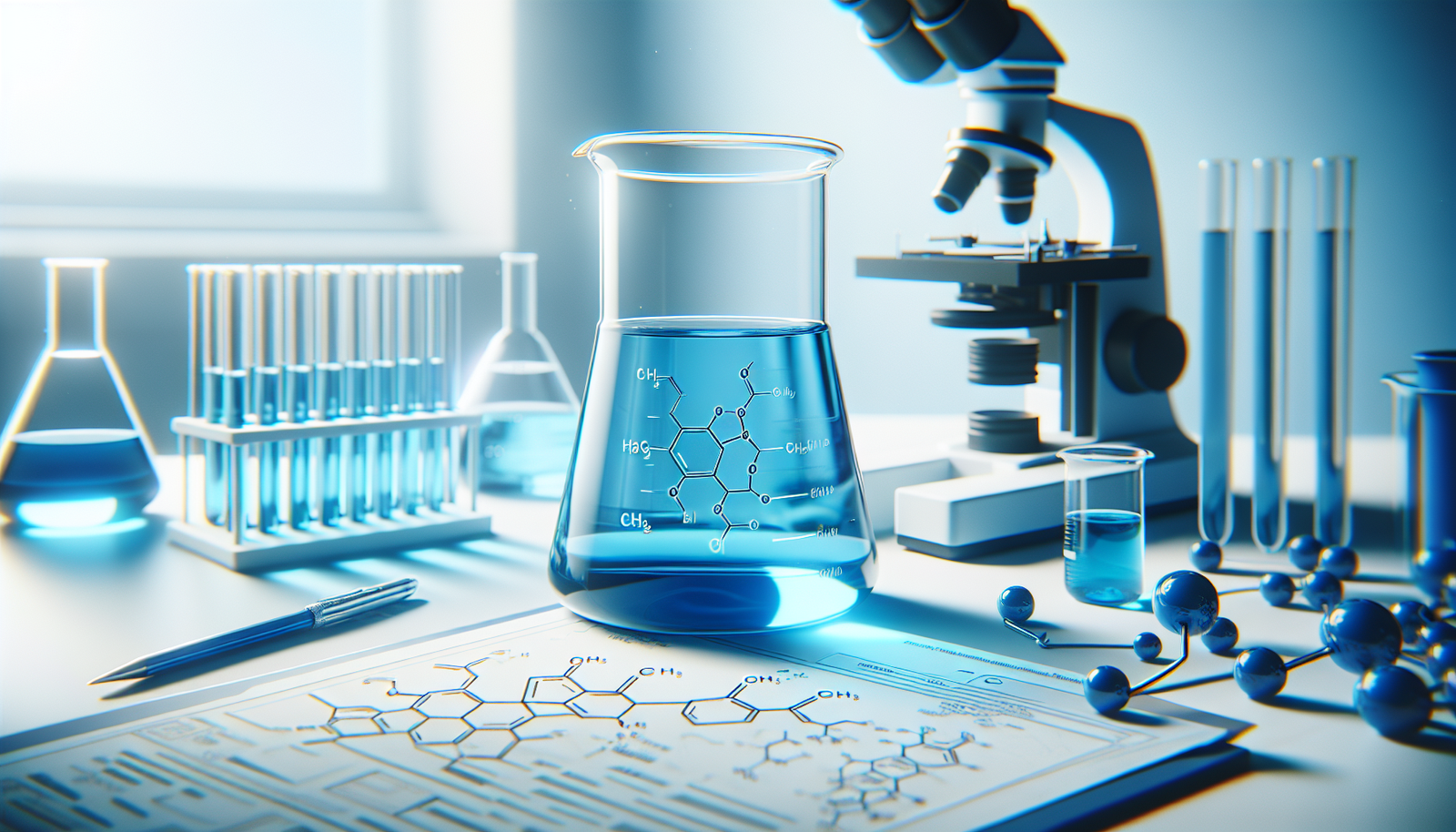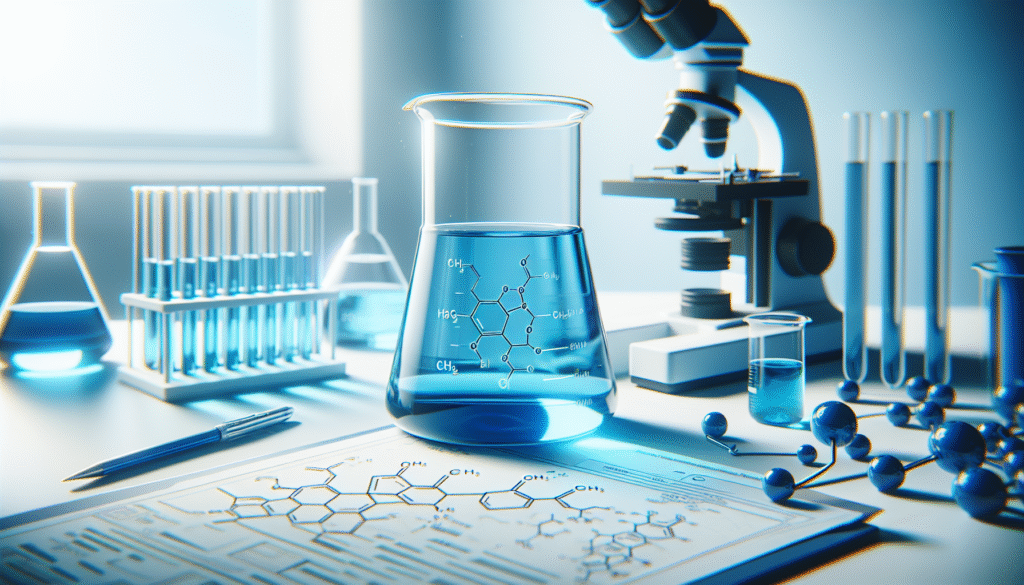
Have you ever wondered about the versatility and applications of Methylene Blue? This compound has seen a resurgence in various fields, from medicine to biology, and even in psychological studies. Understanding Methylene Blue’s properties, uses, and implications can empower you to appreciate its significance in contemporary science and health. In this guide, we will dissect what Methylene Blue is, its historical context, mechanisms of action, applications, and possible side effects.

What is Methylene Blue?
Methylene Blue is a synthetic dye known for its rich blue color. Chemically, it is identified as thionine and belongs to the phenothiazine family. Initially employed as a textile dye, its uses have expanded significantly over time. Its molecular formula is C16H18ClN3S, a configuration that contributes to its various interactions within biological systems.
You may find it interesting that Methylene Blue was the first synthetic drug used in medicine. This historical significance reflects the beginning of modern pharmacology, setting the stage for the development of other synthetic remedies.
Historical Background
The Discovery of Methylene Blue
Methylene Blue was first synthesized in 1876 by the German chemist Heinrich Caro. It began its journey in the textile industry but quickly caught the attention of medical professionals. The dye’s properties were recognized for their potential therapeutic benefits, especially in treating various ailments.
Methylene Blue in Medicine
In the late 19th and early 20th centuries, Methylene Blue became extensively studied as an antimalarial agent. Its use expanded as refined techniques and better understandings of pharmacology emerged. The compound has been noted for its utility in treating methemoglobinemia—a condition where hemoglobin is unable to effectively release oxygen.
Mechanism of Action
How Methylene Blue Works
Understanding how Methylene Blue functions at a cellular level can significantly enhance your appreciation for its versatility. It acts primarily as a redox agent, participating in electron transfer within cells. This property is vital in treating methemoglobinemia, as it reduces methemoglobin back to hemoglobin, restoring the blood’s oxygen-carrying capacity.
It is also worth noting that Methylene Blue has been shown to have antimicrobial properties, making it effective against certain bacteria and fungi. Its capability to influence mitochondrial functions and generate reactive oxygen species under specific conditions adds another layer to its biochemical interactions.
Applications of Methylene Blue
Medical Uses
The medical applications of Methylene Blue are diverse, earning it a place in various treatment protocols:
| Use | Description |
|---|---|
| Methemoglobinemia | Restores normal hemoglobin function, allowing for improved oxygen transport. |
| Antimalarial Treatment | Initially used as an antimalarial agent, though other treatments have since replaced it. |
| Dye in Surgical Procedures | Used as a visual marker during surgeries to identify structures. |
Each of these applications illustrates Methylene Blue’s broad range of potential benefits in medical settings.
Biological Research
Beyond direct medical applications, Methylene Blue serves as a valuable tool in biological research. It can be employed as a staining agent in histology and cytology to identify and visualize cellular structures. This ability to highlight specific elements within cells allows researchers to study cellular dynamics and pathology effectively.
Moreover, its role in neurobiology has garnered attention. Some studies suggest that Methylene Blue may have neuroprotective effects, potentially aiding in the treatment of neurodegenerative diseases like Alzheimer’s and Parkinson’s.
Psychological Applications
Interestingly, Methylene Blue has also been examined in psychological research. Some studies suggest it could influence memory formation and cognitive function. While this area of research is still evolving, the prospect of using Methylene Blue in psychiatric treatments is an exciting frontier.

Potential Side Effects
Understanding Risks
While Methylene Blue has a range of benefits, it is not without side effects. Awareness of these is crucial for anyone considering its use:
| Side Effect | Description |
|---|---|
| Skin Discoloration | Temporary blue or green tint to the skin. |
| Gastrointestinal Distress | Nausea or vomiting can occur, especially at higher doses. |
| Allergic Reactions | Rare but possible in sensitive individuals. |
| Drug Interactions | Can interact negatively with certain medications. |
If you are considering the use of Methylene Blue in any capacity, consulting with a healthcare provider is advisable to discuss potential interactions and side effects.
Dosage Considerations
When considering Methylene Blue, understanding the appropriate dosage is vital. Methylene Blue is typically administered in small quantities, often around 1-2 mg per kg of body weight in treating methemoglobinemia. However, dosages may vary significantly depending on the condition being treated. Always adhere to prescribed guidelines and consult with a healthcare professional.
Methylene Blue in the Context of CBD
The Intersection with Cannabidiol
With the rising popularity of Cannabidiol (CBD), you might wonder how Methylene Blue fits into this landscape. Some researchers are exploring the synergistic effects of combining Methylene Blue with CBD for treating stress and anxiety. The potential benefits of such combinations could lead to enhanced therapeutic outcomes, though more rigorous clinical studies are essential to validate these findings.
Future Directions
Research and Beyond
The future of Methylene Blue is an exciting area of scientific inquiry. As research continues, novel applications may emerge. For example, some studies are exploring its potential role as a treatment for various cancers due to its effects on cellular respiration and apoptosis.
Additionally, advancements in nanotechnology could open new doors for Methylene Blue’s use in drug delivery systems. Its ability to target specific tissues could enhance the efficacy of treatments while minimizing side effects.
Your Role in Awareness
As a reader and a potential end-user of Methylene Blue, staying informed about its evolving applications and research is essential. The scientific community is continuously investigating this compound, and your engagement with the topic could inspire informed discussions and decisions about its use.
Conclusion
The journey of Methylene Blue from a mere dye to a multifaceted therapeutic agent underscores the importance of continuous research and medical advancement. Understanding its properties, uses, and implications empowers you to engage with the broader conversation about synthetic compounds in health and science.
Whether considered for its medical applications, research potential, or its intersection with other therapeutic modalities like CBD, Methylene Blue illustrates the profound trajectory of innovation in the scientific world.
As further studies emerge, your willingness to explore this compound thoughtfully can pave the way for greater understanding and responsible use, ensuring that Methylene Blue remains a valuable resource in various fields. Always prioritize evidence-based information and consult healthcare professionals when considering Methylene Blue as a potential therapeutic option.